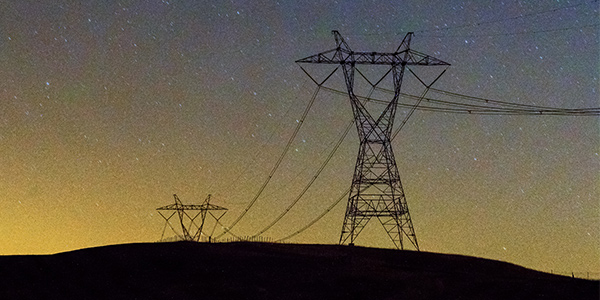CAISO and the California Public Utilities Commission entered the new year trying to get ready for summer and avoid the shortfalls and rolling blackouts that plagued the state in August and September.
The CPUC on Friday proposed ordering the state’s three big investor-owned utilities — Pacific Gas and Electric, Southern California Edison and San Diego Gas & Electric — to contract for additional “incremental” capacity that can be ready this summer to meet heavy demand.
On Wednesday, CAISO held a meeting on the schedule and scope of a series of upcoming sessions to address “market enhancements for summer 2021 readiness.” Substantive meetings are scheduled to begin this week, with topics that include export and load scheduling priorities and resource sufficiency in the ISO’s interstate Western Energy Imbalance Market.
In the first week of 2021, CAISO conducted three days of meetings on its Resource Adequacy Enhancements stakeholder initiative, which started in 2018 but took on new urgency after last summer’s energy emergencies.
The ISO and stakeholders weighed a final draft proposal on the first phase of RA enhancements and a six-time-revised straw proposal on the initiative’s second phase. Items under discussion include RA import requirements, activating storage resources and rules on planned generator outages.
CAISO’s Board of Governors is scheduled to vote on the phase-one changes in March and on phase two in May and September
The ISO proceedings address issues raised in the preliminary root-cause analysis of the blackouts on Aug. 14-15 that affected more than 1 million residents during a severe heat wave that encompassed the Western U.S. Shortages occurred as solar power waned in the evening and there was insufficient capacity to meet continued high demand from air conditioning.
The October preliminary analysis, and a subsequent report by CAISO’s Department of Market Monitoring, identified problems that included inadequate RA planning, forced outages at power plants, a lack of storage for solar and wind resources, transmission constraints, imports that did not materialize and exports that should not have occurred in strained conditions. (See CAISO Wasn’t Gamed in Blackouts, Watchdog Finds.)
“The most significant and actionable of these factors involve California’s resource adequacy program,” the DMM’s November report said. “To limit the potential for similar conditions in future years, system level resource adequacy requirements should be modified to ensure more capacity is available during net load peak hours,” as solar ramps down but demand stays high.
Supply is tightening across the West as coal and “older baseload” fossil-fuel and nuclear plants retire, CAISO staff members noted during an RA enhancements meeting Wednesday.
“Severe weather events have become more common and have impacted … several BAs at the same time, further tightening system conditions,” said Milos Bosanac, CAISO lead infrastructure and regulatory policy developer. Heat waves could continue to pummel the West in the future and limit imports, Bosanac said in his presentation.
To head off shortfalls, RA imports must be linked to specific generating resources in other states, he said. That is not the situation now. If supply is not connected to a physical source, “it poses a risk to supply not being committed to the CAISO when it matters most, when conditions are tight,” he said.
In addition, the ISO wants firm commitments from transmission owners to prioritize RA imports during times of tight supply. Transmission lines from the Pacific Northwest to California can become nearly maxed-out during heat waves, Bosanac noted.
Much of California’s import RA capacity comes from the Bonneville Power Administration over the California-Oregon AC intertie (COB) and the Nevada-Oregon Border DC Intertie (NOB), he said. Those interties will require the highest guarantee of transmission capacity, he said.
“Looking at particularly the COB and NOB interties, usually on those last legs of those interties … especially in the summer months, flows tend to reach or be very close to the limits of those path, Bosanac said. “[With] a higher likelihood of curtailment … it’s important that these deliveries be on the highest priority transmission service to minimize that risk of curtailment so that those imports can be delivered to the CAISO.”
Some stakeholders question the plan because they worry it could lead to the exercise of market power. (See CAISO Seeks ‘Firm’ Tx for Resource Adequacy.)
During an RA meeting Thursday, Doug Boccignone, a principal at Flynn Resource Consultants representing the California Community Choice Association, said only five parties control half the transmission import capability on COB and NOB.
“The rights are really concentrated,” Boccignone said. “It makes me concerned that if California is dependent on imports from the Northwest to meet the resource adequacy requirements … there’s the potential for those parties that control those rights to be in a much different position than they are today.”
CAISO said there are 21 parties that hold transmission rights on the two interties. Bridget Sparks, infrastructure and regulatory policy developer, said the ISO’s analysis did not show a high risk for the entities to exert market power.
“If we think of the market as COB and NOB combined … there is a slight market concentration, [but] it’s nowhere near a monopolistic control,” Sparks said.


